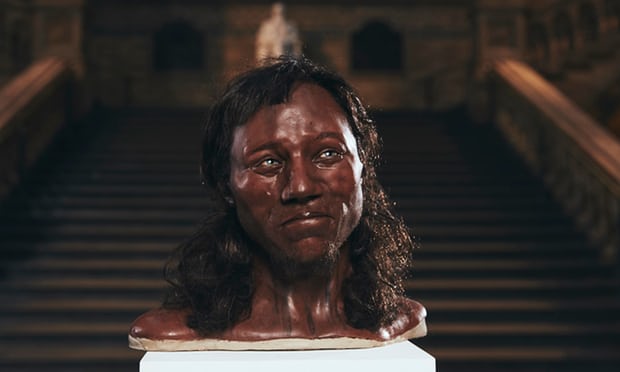Through DNA testing, scientists have found that Cheddar Man, Britain’s oldest skeleton, discovered back in 1903 Gough’s Cave near the village of Cheddar in Somerset in southwest England, had dark skin, brown curly hair, and blue eyes.
Scientists, who have now reconstructed Cheddar Man’s facial features, proved he was a member of a Western European civilization that, as shown over the years, had dark skin. White skin, which is considered a defining trait in most Europeans, only goes back to around 6,000 years ago.
The skeleton, which also has the alias of “the first known Brit,” marked the start of continuous habitation on the island, despite prior population beforehand. Studies show that all previous inhabitants of the island have been completely wiped out, and modern-day Britons descend from the same people as Cheddar Man – at least to our current knowledge.
Modern Brits descend from blue-eyed, dark-skinned Cheddar Man
Cheddar Man died in his 20s about 10,000 years ago during the Mesolithic period, the middle part of the Stone Age. While the general public may be surprised due to his newly discovered ethnicity, scientists or DNA geneticists are certainly not, as the first Brit is generally very similar to other dark skinned individuals originally from the Mesolithic Era – whose DNA has already been tested – found in European countries such as Hungary, Spain, and Luxembourg.
The name earned by the skeleton, isn’t given due to his fond of cheese but rather his place of discovery, which was near the village of Cheddar, which incidentally, is the place where Cheddar cheese is from.
Although humans are known to have inhabited Britain long before the Cheddar Man’s time, he is the first fossil from the island whose genetics have been mapped out.
Bringing the Cheddar Man to life
Dutch model makers, Adrie and Alfons Kennis used 3D scans and printing to add so-called “flesh” into the reconstructed bones of the Cheddar Man. In order to create color from ancient genes, thanks to amazing things technology has provided the modern world, new DNA sequencing techniques made the scattered chromosomes easier to read.
“It’s like taking an ancient book and looking at a whole chapter, versus looking at a single word. Now we can read full paragraphs. Eye pigmentation is determined by a specific gene and a particular variant in the gene,” says Mark Thomas, who is part of a large team that worked with London’s Natural History Museum to reconstruct the Cheddar Man’s face. “For skin, there are a number of variants.”
Source: UCL



